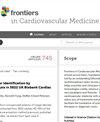微创多血管体外循环冠状动脉手术与 MIDCAB 一样安全有效吗?
IF 2.8
3区 医学
Q2 CARDIAC & CARDIOVASCULAR SYSTEMS
引用次数: 0
摘要
导言微创直接冠状动脉搭桥术(MIDCAB)的安全性和有效性已被大量报道所证实。然而,微创多血管体外冠状动脉旁路移植术(MICS CABG)的接受率较低,尚未得到广泛采用。该研究旨在调查在长期随访中,MICS CABG 在心绞痛、主要不良心脑血管事件(MACCE)和总生存率等几项临床结果方面是否优于 MIDCAB。方法这是一项观察性、回顾性、单中心研究,研究对象为 2007 年至 2018 年期间在我院接受 MIDCAB(n = 626)或 MICS CABG(n = 523)治疗的 1149 例患者。患者的单血管、双血管或三血管血运重建手术均使用了左胸内动脉以及部分桡动脉和隐静脉。我们使用梯度提升倾向分数估计来考虑变量之间可能存在的相互作用。经过倾向分数调整后,两组患者术前的人口统计学特征和风险状况相似。共有 1089 名患者(94.8%)接受了长期随访(平均 5.87 年,中位数 5.6 年)。两组患者在无心绞痛、急性心肌梗死和血管再通率方面的长期结果相似。随访期间,MIDCAB 组有 123 人死亡,MICS CABG 组有 96 人死亡。MIDCAB组的1年、3年、5年和10年生存率分别为97%、92%、85%和69%,MICS CABG组的1年、3年、5年和10年生存率分别为97%、93%、89%和74%。与接受过一次旁路移植手术的患者相比,接受过两次或两次以上旁路移植手术的患者总生存率的危险比为 1.190(P 值 = 0.234,95% CI:0.893-1.586)。这表明两组患者的生存率没有明显差异。此外,如果我们认为 1.2 的危险比与临床无关,那么使用两个或更多移植物的手术明显不劣于仅使用一个移植物的手术(p 值 = 0.0057)。结论在经验丰富的医生手中,MICS CABG 是一种安全有效的手术,其存活率和耐久性与 MIDCAB 相当。本文章由计算机程序翻译,如有差异,请以英文原文为准。
Is minimally invasive multi-vessel off-pump coronary surgery as safe and effective as MIDCAB?
IntroductionThe safety and efficacy of minimally invasive direct coronary artery bypass (MIDCAB) surgery has been confirmed in numerous reports. However, minimally invasive multi-vessel off-pump coronary artery bypass grafting (MICS CABG) has lower uptake and has not yet gained widespread adoption. The study aimed to investigate the non-inferiority of MICS CABG to MIDCAB in long-term follow-up for several clinical outcomes, including angina pectoris, major adverse cardiac and cerebrovascular events (MACCE) and overall survival.MethodsThis is an observational, retrospective, single center study of 1,149 patients who underwent either MIDCAB (n = 626) or MICS CABG (n = 523) at our institution between 2007 and 2018. The left internal thoracic artery and portions of the radial artery and saphenous vein were used for the patients’ single-, double-, or triple-vessel revascularization procedures. We used gradient boosted propensity-score estimation to account for possible interactions between variables. After propensity-score adjustment, the two groups were similar in terms of preoperative demographics and risk profile. Long-term follow-up (mean 5.87, median 5.6 years) was available for 1,089 patients (94.8%).ResultsA total of 626, 454 and 69 patients underwent single, double and triple coronary revascularization, respectively. The long-term outcomes of freedom from angina pectoris, acute myocardial infarction, and revascularization rate were similar between the two groups. During follow-up, there were 123 deaths in the MIDCAB group and 96 in the MICS CABG group. The 1-, 3-, 5-, and 10-year survival rates were 97%, 92%, 85%, and 69% for the MIDCAB group and 97%, 93%, 89%, and 74% for the MICS CABG group, respectively. The hazard ratio of overall survival for patients with two or more bypass grafts compared to those with one bypass graft was 1.190 (p -value = 0.234, 95% CI: 0.893–1.586). This indicates that there was no significant difference in survival between the two groups. Furthermore, if we consider a hazard ratio of 1.2 to be clinically non-relevant, surgery with two or more grafts was significantly non-inferior to surgery with just one graft (p -value = 0.0057).ConclusionIn experienced hands, MICS CABG is a safe and effective procedure. Survival and durability are comparable with MIDCAB.
求助全文
通过发布文献求助,成功后即可免费获取论文全文。
去求助
来源期刊

Frontiers in Cardiovascular Medicine
Medicine-Cardiology and Cardiovascular Medicine
CiteScore
3.80
自引率
11.10%
发文量
3529
审稿时长
14 weeks
期刊介绍:
Frontiers? Which frontiers? Where exactly are the frontiers of cardiovascular medicine? And who should be defining these frontiers?
At Frontiers in Cardiovascular Medicine we believe it is worth being curious to foresee and explore beyond the current frontiers. In other words, we would like, through the articles published by our community journal Frontiers in Cardiovascular Medicine, to anticipate the future of cardiovascular medicine, and thus better prevent cardiovascular disorders and improve therapeutic options and outcomes of our patients.
 求助内容:
求助内容: 应助结果提醒方式:
应助结果提醒方式:


